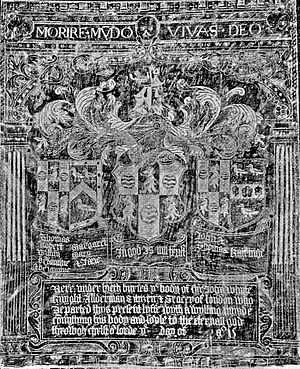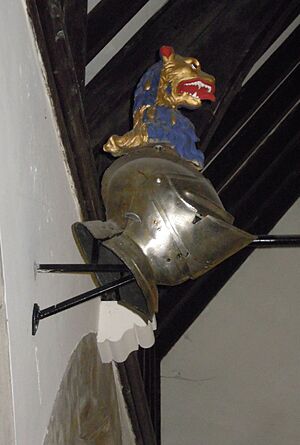John White (died 1573) facts for kids

Sir John White (around 1512 – June 9, 1573) was an important merchant and politician from Aldershot and London. He served as the Lord Mayor of London from 1563 to 1564. Queen Elizabeth I made him a knight in 1564. Sir John lived through the reigns of several English monarchs, including Henry VIII, Edward VI, Lady Jane Grey, Mary I, and Elizabeth I.
Contents
Early Life and Family
Sir John White was born in Farnham, Surrey, around 1512. He was the sixth of eight sons born to Katherine Wells and Robert White, who came from a long line of merchants in Farnham. By the 1500s, his family owned land in nearby Aldershot, as well as in Berkshire and Surrey. His older brother, Henry White, became a Vice Chancellor at Oxford University. Another elder brother, John White, was a bishop during Queen Mary's reign.
Important Public Roles
Sir John White held many important positions in London. He was the Treasurer of St Bartholomew's Hospital starting in 1549. He became an alderman for Cornhill and an auditor for the City of London in 1554. He was also the Master of the Worshipful Company of Grocers, a powerful trade group, in 1555-56 and again in 1560-61.
In 1556-57, he served as a Sheriff of the City of London. His most important role was being the Lord Mayor of London from 1563 to 1564. He also led Bethlem Royal Hospital and Bridewell Hospital from 1568 until his death, and was President of Christ's Hospital. From 1572 to 1573, he was the Surveyor-General for London's hospitals.
Career and Business
Even though his brother, Bishop John White, was a strong Catholic who persecuted Protestants under Queen Mary, Sir John White seemed to adapt to different religious times. His name appeared on pardon lists at the start of both Queen Mary's and Queen Elizabeth I's reigns, suggesting he was not strongly tied to one religion.
Sir John was a very successful merchant, especially in the Spanish markets. He likely traded many different types of goods, not just one. In 1554, he and Sir Henry Hoberthorne were allowed to export a large amount of bell-metal. Sir John also lent money to the English Crown (the government). With the money he earned from his businesses, he bought more land, adding to the properties he already owned in Aldershot. He also bought land in other parts of England, like Devon, Kent, Surrey, Shropshire, and Wiltshire.
He became a Member of Parliament in 1566, representing London. He was elected again in 1571. In Parliament, he discussed important matters like Queen Elizabeth I's marriage and who would become the next ruler.
Family Life
Sir John White's first wife was Sybil White, who might have been a distant cousin. She was the sister of another important politician, Sir Thomas White. Sir John and Sybil had four sons: Thomas, William, Benjamin, and Robert (1545–1599), and three daughters: Mary, Jane, and Margaret.
In 1558, he married his second wife, Catherine (1530–1576). Catherine was the daughter of John Soday, an apothecary (someone who prepared medicines) for Queen Catherine of Aragon. Catherine had been married twice before. With Catherine, Sir John had two more sons, John (1559–1645) and Thomas, and one daughter, Catherine. His son John's godfather was his uncle, Bishop John White.
Death and Burial
Sir John White passed away in London in June 1573. He had written his will the month before. In his will, he asked to be buried in St Michael's Church in Aldershot, where he was the Lord of the Manor. A brass memorial plaque is still there today. He wanted a brass plate with his family's symbols and the date of his death to be placed on the wall near his burial spot.
His will also asked for a "discreet learned man" to give a sermon at his funeral or soon after. His belongings were divided into three parts: one part for his wife, one part for his children who had not yet received their inheritance, and the last part for gifts to others. These gifts included money for his maidservants, the poor people of Aldershot and Cornhill ward, and prisoners in Ludgate and Newgate jails. He was buried in the North East corner of the old church in Aldershot, beneath his special funeral helmet and crest. His lands in Aldershot were passed down to his son, Sir Robert White.


